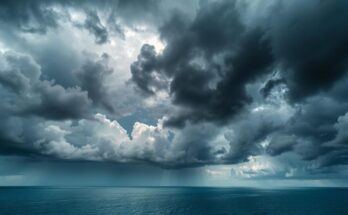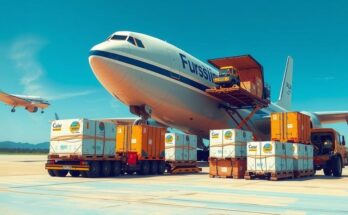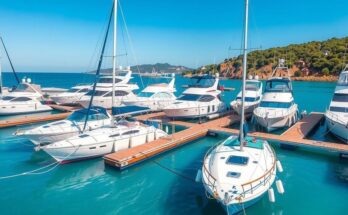Hurricane Alley is a key region in the Atlantic Ocean known for its frequent and powerful hurricanes, affecting various coastal areas. Hurricanes form over warm waters with sustained winds exceeding 74 miles per hour. Only a few storms make landfall annually, primarily from June to November, with September marking peak activity. The naming of hurricanes follows a regulated process, aiming to identify significant storms that cause damage. Authorities emphasize ongoing research and preparedness in response to the increasing threats from these superstorms.
Hurricane Alley is a notorious region in the Atlantic Ocean, recognized for its propensity to spawn hurricanes that can affect numerous coastal areas. This area stretches from Central America and the Gulf of Mexico to the northern coast of Africa. Hurricanes develop over warm tropical waters, specifically where temperatures reach approximately 82 degrees Fahrenheit or higher. These storms can generate destructive winds and waves, wreaking havoc both on land and submerged marine habitats.
As defined by the National Ocean Service, a hurricane does not officially qualify as such unless its sustained winds reach a minimum of 74 miles per hour. The storms are categorized from 1 to 5 based on their wind speed and potential for destruction, with Category 5 hurricanes indicating catastrophic damage at speeds exceeding 157 miles per hour.
The naming of hurricanes follows a systematic rotation of pre-approved names, a contrast to earlier historical practices where storms were named after saints or notable figures. Damage-inducing hurricanes like Harvey and Irma have had their names retired due to the significant harm they caused.
While hurricanes predominantly form over the Atlantic and can hit land, not every storm makes landfall; typically, only about two hurricanes strike the U.S. coastline annually. The peak for hurricane activity occurs around September, with a majority of storms forming between mid-August and mid-October. Coastal cities, especially those with lower elevations, are more susceptible to hurricanes, although instances exist where hurricanes have significant impacts even without making landfall. The hurricane season spans from June to November but can, in some cases, extend beyond those months.
Hurricane Alley is primarily characterized by its location in the Atlantic Ocean, where hurricanes form and pose threats to various coastal regions. Understanding the dynamics of hurricane formation is crucial to comprehending the dangers associated with these powerful storms. The geographical span of Hurricane Alley is unique in that it does not correspond to a landmass like Tornado Alley in the U.S. Instead, it represents an oceanic region more vulnerable to tropical cyclone development due to warm water temperatures. This article provides insights into the mechanics of hurricanes, seasonal statistics, and the significance of naming conventions, reflecting critical elements related to hurricane behavior in Hurricane Alley.
In summary, Hurricane Alley serves as a significant breeding ground for hurricanes, impacting multiple regions along its stretch. The formation of these storms is directly influenced by warm ocean waters, with a classification system that grades their potential destructiveness. Understanding the patterns, frequency, and naming conventions related to hurricanes is vital for preparedness and risk assessment. The implications of hurricanes extend beyond coastal impacts, underscoring the necessity for ongoing monitoring and research to mitigate future threats.
Original Source: www.thetravel.com




